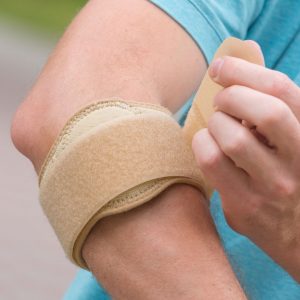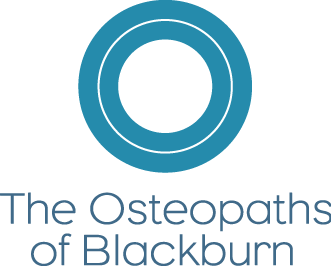Student’s Elbow
 This month’s blog is about a common elbow injury; ever heard of student’s elbow? “But I’m not a student!” we hear you say. Well you don’t have to be to fall victim to this condition. Students elbow, or ‘Olecranon Bursitis’ is a condition where a small sack of tissue over the tip of your elbow becomes inflamed and swollen. The pointy bit of bone at the end of your elbow is called the ‘olecranon’ and the small sack which sits between the bone and the skin is called a ‘bursa’. The ‘itis’ part of bursitis simply refers to inflammation of that bursa.
This month’s blog is about a common elbow injury; ever heard of student’s elbow? “But I’m not a student!” we hear you say. Well you don’t have to be to fall victim to this condition. Students elbow, or ‘Olecranon Bursitis’ is a condition where a small sack of tissue over the tip of your elbow becomes inflamed and swollen. The pointy bit of bone at the end of your elbow is called the ‘olecranon’ and the small sack which sits between the bone and the skin is called a ‘bursa’. The ‘itis’ part of bursitis simply refers to inflammation of that bursa.
What are the causes?
The most common way to develop student’s elbow is repetitive trauma to the tip of the elbow which slowly irritates the bursa and causes inflammation over time. Think of a student who sits for hours, day after day writing at a desk with their elbow resting on the table. The constant pressure on the tip of the elbow could be enough to kick things off. Anyone whose elbows are subject to repetitive pressure could develop this problem; plumbers and office workers are other good examples.
Other causes include:
- A single blunt force trauma or fall onto the tip of the elbow
- Infection
- Having an olecranon spur (an extra small bony growth which rubs against the bursa)
- Having an extra pointy olecranon (some peoples skeletons are just a bit different)
- This condition may also develop as part of having another medical condition, such as Diabetes Mellitus, Gout, Rheumatoid Arthritis, HIV or alcoholism.
Signs and symptoms
So, what does student’s elbow look like? Signs and symptoms include:
- A painful or (often) non-painful swelling on the end of your elbow
- Pain with leaning on your elbow
- Painful elbow movement
- Restricted elbow movement (although this is often unaffected)
- Redness, warmth and a fever (if associated with infection)
Will I need to have any tests done?
Possibly. As with all lumps on the body, your practitioner will want to rule out anything serious going on first. We ask lots of questions so we can paint a picture of what’s going on in our clinical head. Depending on your signs and symptoms, if you have a history of cancer or if infection is suspected, you may be directed to your GP for tests. This is to make sure you are receiving the best treatment in the best time frame. Your doctor may need to take a sample of the fluid inside the swelling to be sent off for lab testing. This will be able to tell us if infection is playing a part or not.
Treatment
The treatment of bursitis is very much dependent on the cause. If the cause is infection, then your GP will start you on a course of antibiotics and anti-inflammatories to fight it off and control the pain. Other treatment may include the use of ice or contrasting hot/cold bathing to help reduce the swelling. In severe cases, your elbow may need to be splinted or elevated in a sling. Elbow pads and changes to your general activities may also help to protect the elbow from further injury. Your GP may offer to drain the swelling (this is called ‘aspiration’ and requires a needle to remove the fluid), and this can help to provide relief by reducing pressure around the elbow.
Once clear of infection, or if you have a non-infective bursitis, then your superhero osteo can step in and work their magic. Abracadabra!
During the inflammatory process, swelling and pain may have affected how you use your arm. With pain, people often stop using that part of the body and swelling can affect the joint’s ability to move smoothly through its range of motion. This can have a knock-on effect on the muscles and other tissues which surround the elbow joint. Many muscles which cross the elbow and are involved in elbow movement also cross the shoulder and wrist to aid in their function. So, you can see how a problem at the elbow could affect the whole limb (and beyond).
Here at The Osteopaths we will get to work at restoring full function to the shoulder, elbow and wrist. We will look at your spinal movements too to see if they have been affected. You can expect to be mobilised and massaged and we may also perform some lymphatic drainage techniques to help restore fluid movement through the limb (which may have stagnated during the injury process). Your biceps, triceps and other arm/forearm muscles may have shortened over time so we may perform some stretching techniques and give you some exercises to do at home to back up what we do in the clinic room. If necessary, strengthening exercises may be given to reduce the risk of future episodes.
If your bursitis doesn’t resolve with the above treatments or keeps coming back, a decision may need to be made on whether the bursa should be removed surgically. This is called a ‘bursectomy’ and is usually a last resort. Extra pointy olecranons or spurs can also be treated surgically if needed.
Back to school… And work!
Now that the festive season is over, the kids are back at school and the parents are back to work. Normality resumes. Keep an eye on those elbows people! If you think you are developing an elbow problem (or any body part for that matter) then please call us on 9455 3011 and we’ll get working on it straight away.
